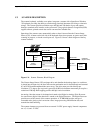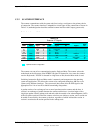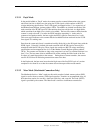
Appendix C Keyboard
Compaq Personal Computers
Changed - November 1996
C-18
C.3.2 SCANNER INTERFACE
The scanner communicates with the system unit (host) using a serial port as the primary choice
of connection. The scanner interface is adaptable to several types of host connections as shown in
Table C-4 (unshaded portion describes standard scanner interface with Compaq system unit).
Table C–4.
Scanner I/F Signals
Table C-4.
Scanner I/F Signals
Pnyb
Mode
Mser
Mode
RS232
Signal
DB9
Pin
DB25
Pin Signal
DB25
Pin Signal
DIN8
Pin
P0 SCLK CTS 8 5 Select 13 HSKIn 2
P1 DSR 6 6 Paper Out 12 -- --
P2 RI 9 22 Ack 10 -- --
P3 DCD 1 8 Busy 11 -- --
PCLK DTR DTR 4 20 Strobe 1 HSKOut 1
SOUT TXD RTS 7 4 Init 16 TXD 6
GND -- GND 5 7 GND 18 GND/RXD+ 4/8
PnP RXD -- 2 3 -- -- RXD- 5
The scanner uses one of two communication modes; Pnyb and Mser. The scanner selects the
mode based on the idle status of the DTR/PCLK signal. If detected in a low state, the scanner
uses the Pnyb mode. If PCLK is detected in a high state at idle, then the Mser mode is used.
Switching between the Pnyb and Mser modes is automatic and transparent to the operating
system and application. This allows the scanner to be configured through an A/B box to two
systems using different interfaces. The system unit (host) must drive the DTR signal at the
appropriate level for at least 20 us before transmitting data packets.
A packet consists of an exchange of one or more bytes between the scanner and the host. A
session is an exchange of packets between the scanner and the host. A session begins with a
single-byte packet called a wakeup code and ends with the transfer of an acknowledgment (ACK)
of the last packet received. Either the scanner or the host can initiate a session, and a session can
be ended or cancelled by the scanner or the host, regardless of which initiated the session. A
session is restricted to the action specified in the wakeup code.
Scanner Signals
Serial Port (PC)
Parallel Port Serial Port (MacIntosh)
Optional interface configuration.


















